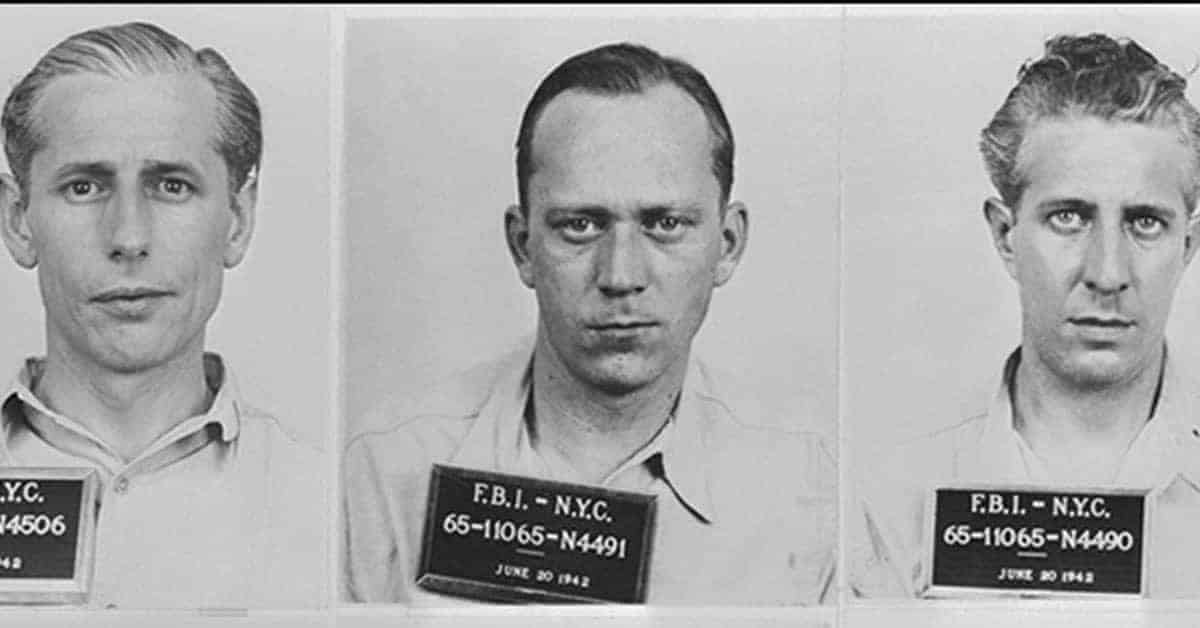On June 13, 1942, all the attention of the United States was focused on the war overseas. As the war raged on the first foreign invasion on U.S. soil in over 100 years was taking place. It was just after midnight and in the dark waters off of Long Island, a German submarine stopped in a sandbar just 100 yards off the coast. The submarine was helmed by Captain Hans-Heinz Linder and he and his crew were on a very special mission to send one very big message to the United States.
With the submarine hidden in darkness, the crew lowered a large rubber raft into the water. Three men in Nazi uniforms climbed into the raft. A fourth man climbed into the boat with civilian clothes on. He was George Dasch and he knew the Long Island coast well. He had once been a waiter on Long Island’s East End. Now even though he refused to wear the uniform of his companions he was leading them on a mission to attack the place he once called home.
They were on a mission that was the brainstorm of Hitler himself. The German agents had all lived in the U.S. and they had returned home in order to help out their native homeland. They were trained for the mission spending time in Germany’s “sabotage school.” They were trained to create explosives, build timers and even communicate using “secret writing.” But for all their training it was not enough to convince everyone that bring death and destruction to the United States was a good thing. The men were told they were to avoid killing or injuring people, which might have been enough to convince any men that were on the fence.

Their mission was simple. Hide out in New York and use their newly granted skills to sabotage factories that were considered to be essential to the war effort. They were told to make the explosions accidental and to avoid killing or injuring anyone because that would “not benefit Germany.” The only goal was to halt production at these factories. It was poor planning that caused the mission to be doomed from the start as the men ran into problems before they even started.
The first problem they ran into was the depth of the water off the coast of Long Island. The U-boat continually ran aground. It was remarkable that the slow pace and the number of times the U-boat got stuck that it was never discovered by the U.S. Coast Guard. It was not until the men were making their way ashore in the rubber raft that they were finally spotted. U.S. Coast Guard seaman John Cullen was just 21 years old and had no idea what to think of the men in the rubber raft in the middle of the night.

